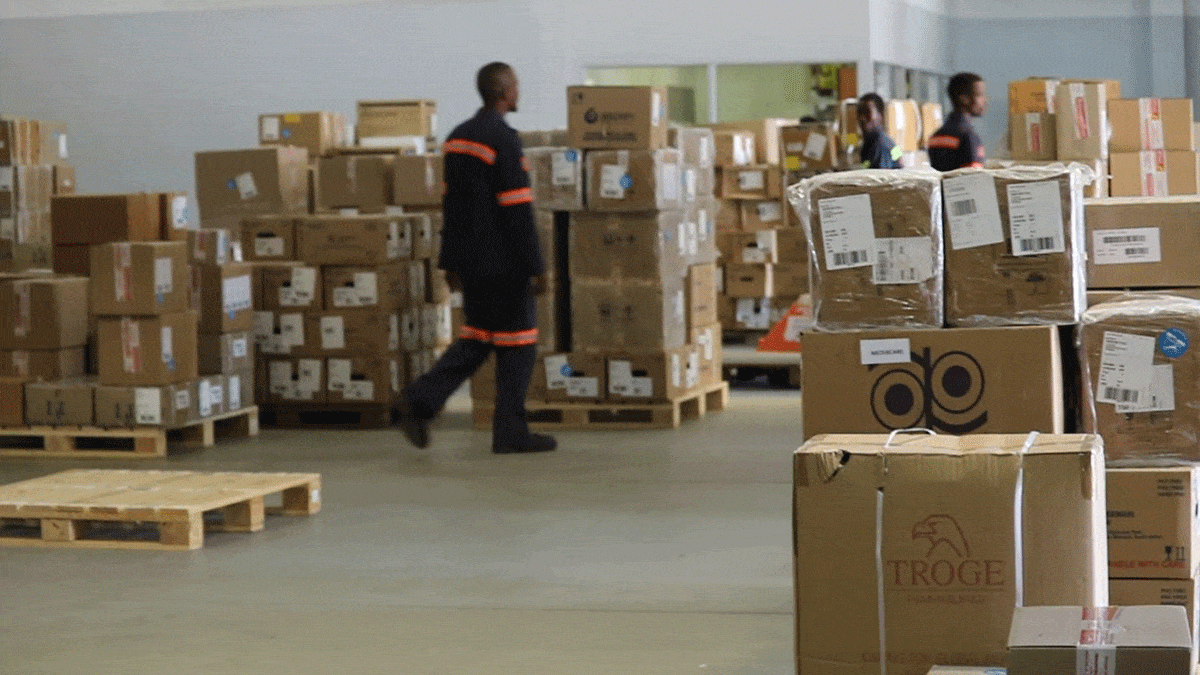At least nine civil servants- nurses and pharmacists have been questioned by the Directorate on Corruption and Economic Crime (DCEC) in connection with the theft of ARVs valued at close to half a million Pula.
The nine suspects are based at three clinics in GoodHope, Mmathethe, and Metlojane villages in the Southern District. They were caught red-handed with the ARVs that had been dispensed from the Central Medical Stores in Gaborone and destined for the three villages, DCEC spokesperson, Lentswe Motshoganetsi has confirmed .
“During our investigations we also arrested a man who had P89,000.00 cash in his possession, which we believe was to be paid to the suspects. We learned that he is the buyer and that he supplies private pharmacies.
Motshoganetsi said the consignment comprised ARVs, medication for Diabetics, and medication for Hypertension.The two months investigations have established that the theft problem is nationwide and DCEC will soon set their probing eyes on some facilities in Gaborone, Selibe Phikwe, and Gumare among other areas.
The suspects are all Batswana civil servants and have not been suspended from work pending completion of investigations.
It is not yet clear whether the serious shortage of drugs that hit the country in 2022 should be attributed to theft.
Nonetheless, the National Aids and Public Health Agency (NAHPA) says theft of ARVs has not had any impact on the distribution of the drugs to the intended beneficiaries.
The organisation says there is no link whatsoever of the recent increase in new HIV infections to the theft of ARVs and it has never experienced shortage of ARVs at any point.
“No link, there has never been non availability of ARVs in health facilities, this was also confirmed by the ARV Coordinator from MoH,” said the Principal Public Relations Officer Daniel Moatshe in response to our inquiries.”
Sources within the security sector have revealed that Zimbabwe, South Africa and Mozambique are common destinations for the stolen medications where they offer a good price.
Nevirapine is said to be one of the targeted drugs since it reduces side effects such as rash, mouth sores, blisters, facial swelling, and eye inflammation, and also user friendly since it does not require one to eat before taking it. However, the ministry could not confirm or deny the allegations since investigations are at initial stages.
The Ministry of Health also confirmed that some of their employees are implicated in the theft but were reluctant to shed any further details. “Since investigations are ongoing, the ministry is currently unable to share any numbers that law enforcement agencies may have arrested to allow them space to enforce the law as is their mandate,” said a response from Dr Christopher Nyanga.
The ministry would neither share information on the names nor the volume of the stolen drugs. However, MoH concurred with NAHPA that there was no link between the theft of ARVs and a spike in new infections.
“Issues of new HIV infections are largely attributable to unsafe sex practices. It is for this reason that the ministry believes in continued public education on HIV and behavioral change”.
Nyanga confirmed the possibility that some of MoH staff could have been involved in the theft of the drugs. “Not only will such behaviour be criminal, but it will also be unethical and unbefitting for a health care worker, whose primary duty is to safeguard the health of their patients,” he said.
Meanwhile, the spike in new infections seems to be more in urban than rural areas.
According to the findings of the fifth Botswana Aids Impact Survey, on adults between 15-64 years old, the prevalence was 20.8 percent or 329,000 living with HIV.
“HIV prevalence was 26.2 % among females and 15.2 among males. According to UNAIDS in 2022 Estimates, there were 4 320 new infections estimated in Botswana. Of those, 2 643 were among women aged 15 plus years. Infections were high among young women aged 15-24 years at 1 085, which was a quarter of all estimated new HIV infections,” said Moatshe.
Some of the contributing factors to the new infections include peer pressure, gender inequality and unequal power dynamics, stigma and discrimination.







